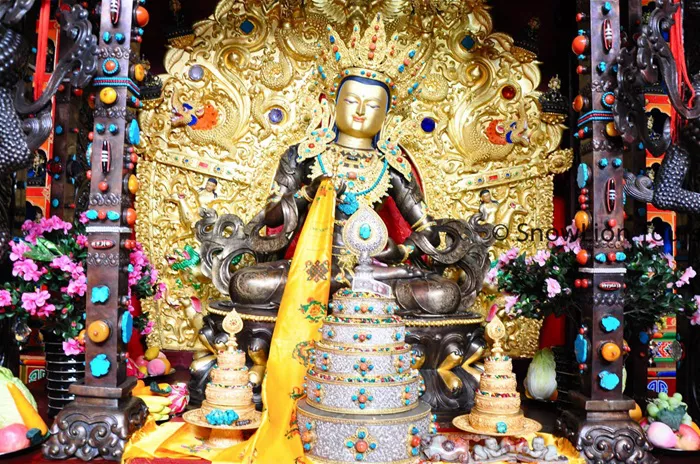On June 11, 2025, a commemorative event was held at the Taipei Municipal Stadium to mark the spiritually significant month of Saga Dawa in the Tibetan Buddhist calendar, the month of the Buddha’s birth, enlightenment and nirvana.
The event was jointly organized by the Office of Tibet in Taiwan, the International Tibetan Buddhist Research Association of Taiwan, the International Tibetan Buddhist Association of Taiwan, the Taiwan Tibet Association, and the Center for Tibetan Buddhist Studies of Xuanzang University.
The event brought together members of the Tibetan community, local Taiwanese believers, and representatives of Buddhist organizations to celebrate the profound teachings of the Buddha and promote spiritual harmony.
The event was attended by His Holiness Shakpa Chokyi Rinpoche, Kundeling Tasak Rinpoche, Khenchen Gongcho Gyaltsen Rinpoche, and Drikung Khenchen Nyima Gyaltsen, as well as geshes, teachers, monks and nuns, and members of the Tibetan community in Taiwan.
During the event, Kelsang Gyaltsen Bawa, the representative of the Central Tibetan Administration in Taiwan, spoke about the significance of holding the Saga Dawa Festival. He also outlined the upcoming plans, including preparations for the upcoming 90th birthday celebration (Ghoton) of His Holiness the 14th Dalai Lama, and encouraged the community to actively participate.
The guest of honor, Kyabje Sharpa Choeje Rinpoche, spoke on the life and teachings of Gautama Buddha.
Other guests, including Kyabje Kundeling Rinpoche, Khenchen Kunchog Gyaltsen Rinpoche and Khenchen Nyima Gyaltsen Rinpoche, also shared profound teachings, highlighting the spiritual significance of Saga Dawa.
The morning session ended with a performance of the Qiang dance by the Nyingma Buddhist Center and festive songs by Tibetan singer Lhundrup.
In the afternoon, the commemoration activities continued, including a series of cultural activities such as traditional Tibetan song and dance performances, Mandala offerings, Dolma making, Tibetan calligraphy writing, etc., to promote Tibetan traditions. The day’s activities ended with a collective prayer, which attracted many members of the public to participate.

